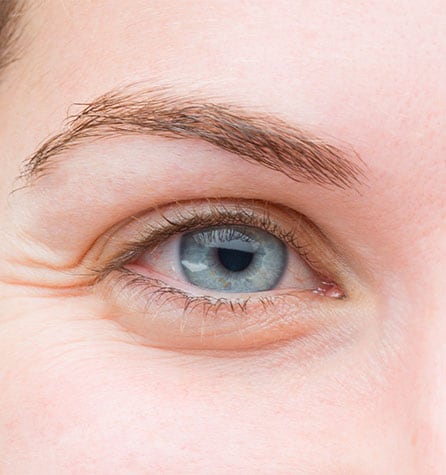Household Eye Doctors in Andalusia: Comprehensive Vision Care
Household Eye Doctors in Andalusia: Comprehensive Vision Care
Blog Article
Comprehending the Different Vision Correction Procedures Available for Clearer View
In the realm of vision adjustment treatments, a wide range of alternatives exist to address refractive errors and supply people with clearer view. Allow's explore the ins and outs of these procedures and shed light on the course to accomplishing enhanced vision quality (Cardiologist Andalusia).
LASIK Surgery
LASIK surgical treatment is an usual refractive treatment used to fix vision issues such as farsightedness, astigmatism, and nearsightedness. This surgical technique, which stands for Laser-Assisted in Situ Keratomileusis, aims to reshape the cornea to boost how light is concentrated on the retina, eventually improving vision quality. Throughout the treatment, a thin flap is created on the cornea, and a laser is used to remove accurate amounts of tissue to reshape it properly. This reshaping allows for light to be precisely focused onto the retina, correcting refractive mistakes.
Among the key benefits of LASIK surgery is the quick renovation in vision experienced by people. Several people discover a significant improvement in their sight right away after the procedure. In addition, a lot of individuals report minimal discomfort and pain throughout the surgical treatment and recovery duration. The recovery time for LASIK is relatively fast, with lots of individuals going back to their daily tasks within a day or 2 post-operation. Generally, LASIK surgery is a preferred option for people seeking a long-term solution for their vision troubles.
PRK Treatment

PRK is a suitable alternative for individuals with slim corneas or those at a greater risk of eye injuries, as it does not include creating a corneal flap. The healing process for PRK is a little longer compared to LASIK, as the epithelium requires time to restore. Clients might experience pain and blurred vision for a couple of days adhering to the procedure.
Regardless of the longer recuperation time, PRK can generate outstanding results in vision enhancement, making it an important option for those that might not be ideal prospects for LASIK surgical treatment. - Neurologist Andalusia
Implantable Lenses
In comparison to PRK where the cornea is improved directly, implantable lenses supply another method for correcting vision by placing fabricated lenses inside the eye. This procedure is particularly advantageous for individuals with high degrees of astigmatism, farsightedness, or nearsightedness that might not appropriate prospects for laser surgical procedures like LASIK or PRK.
Implantable lenses, additionally referred to as phakic intraocular lenses, work by supplementing the eye's natural lens with a synthetic one. These lenses can be placed before the all-natural lens (former chamber) or behind the iris and in front of the all-natural lens (posterior chamber) By changing the power and positioning of these lenses, eye doctors can effectively remedy refractive mistakes and boost aesthetic acuity.
One advantage of implantable lenses is that they are detachable and exchangeable, offering versatility for future modifications. As with any kind of medical procedure, there are dangers included, such as infection or cataract development. Patients thinking about implantable lenses need to seek advice from an eye treatment professional to identify the most suitable alternative based on their specific demands and eye health and wellness.
Corneal Rings

The treatment for inserting corneal rings is relatively fast and minimally invasive, frequently performed as an outpatient procedure. During the surgical procedure, the eye doctor makes a little laceration in the cornea and inserts the rings at a specific depth. When in place, the rings help to reshape the cornea, offering a smoother surface area for light to get in the eye, which can cause more clear vision.
Corneal rings are thought about a reversible treatment, as they can be removed or changed if needed. While they might not totally eliminate the need for glasses or call lenses, corneal rings can substantially improve vision quality and total aesthetic convenience for individuals with keratoconus or other corneal abnormalities.
Refractive Lens Exchange
Following the improvement of corneal irregularities with treatments like corneal rings, an additional vision adjustment strategy that can deal with refractive mistakes is Refractive Lens Exchange (RLE) RLE is a surgery that involves changing the eye's all-natural lens with a synthetic intraocular lens (IOL) to deal with refractive mistakes such as presbyopia, farsightedness, and nearsightedness. This procedure is especially advantageous for individuals that may not be ideal prospects for procedures like LASIK or PRK as a result of aspects such as thin corneas or high refractive errors.
RLE belongs to cataract surgical procedure, as both involve getting rid of the eye's all-natural lens; however, in RLE, the lens is clear, not over cast as in cataracts. The synthetic lens implanted throughout RLE can be tailored to resolve the person's site details refractive error, providing clear vision at various ranges. Healing time for RLE is reasonably fast, and patients can expect better vision not long after the procedure. Similar to any kind of operation, prospective risks and complications exist, so a complete examination with an eye treatment professional is vital to establish if RLE is the right vision improvement choice.
Final Thought

In the world of vision correction treatments, a wide range of choices exist to address refractive mistakes and supply people with clearer sight.LASIK surgical treatment is a common refractive procedure used to deal with vision problems such as nearsightedness, astigmatism, and farsightedness.While likewise an usual this link refractive procedure, the PRK (Photorefractive Keratectomy) technique differs from LASIK surgical treatment in its method to dealing with vision problems.Complying with the adjustment of corneal abnormalities with procedures like corneal rings, another vision improvement strategy that can resolve refractive errors is Refractive Lens Exchange (RLE) LASIK surgery, PRK treatment, implantable lenses, corneal rings, and refractive lens exchange are all options that can address different vision problems.
Report this page